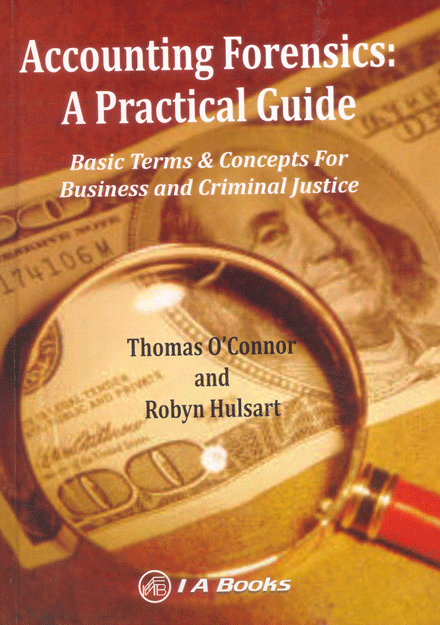Subtotal: 0.0
Accounting Forensics: A Practical Guide: Basic Terms & Concepts For Business and Criminal Justice
₹1628
Accounting Forensics: A Practical Guide: Basic Terms & Concepts For Business and Criminal Justice
Chapter 1
The Nature & Extent of Financial Crime
The Definitional Debates
White Collar Crime defined
Common Typologies
The Measurement Problem
Data difficult to come by
The Guesswork of Cost Estimates
Profile of the Financial Criminal
Typical Profile
Uncertainty about Sociological and Psychological Motives
Chapter 2
Legal Elements of Financial Crime
Basic Legal Concepts
The Prima Facia Standard
Mens Rea & Actus Reus
Selected Financial Crimes within the United State Code (§§ 18, 26, 15, 31)
Review of Statutes, concepts and terms, Conspiracy law, and the Bank Securities Act (BSA)
Title 18 Crimes and Criminal Procedure
Title 26 Internal Revenue
Title 15 Commerce and Trade
Title 31 Money & Finance
Recent Legislation
Sarbanes-Oxford Act (SOX) of 2002
Additional Laws
Obstruction of Justice
Societal Responses to Financial Crime
Chapter 3
Perpetrators, Lifestyles and Motivations of Financial Criminals
Pre-incident Indicators
Psychological Autopsy
Solvability Factors
Crime Reconstruction & Court-defensible Terminology
Levels of Certainty & Levels of Proof
Profiling White Collar Criminals
Weisburd, Cressey, Albrecht, and Wells
Occupational Criminals
Low-level Occupational Crime; Theft, Fraud, and Error
The Ditton and Mars studies
Kleptomania, Embezzlement, Vendor Fraud
Corporate Criminals
Speculations of Motive
Engagement Planning
Materiality
Chapter 4
Accounting Systems and Fraud Detection
Accounting defined
Overview of Bookkeeping
Basic Methods
Methods of Recording Transactions
Overview of Accounting
The Ledger
The Business Cycle
Understanding the Accounting Department
Overview of Financial Statements
Net Worth Statements
Balance Sheets
Income Statements
Cash Flow Statements
Fraud Detection using Financial Statements
IRS ``Red Flags``
Chapter 5
Fraud Auditing and Forensic Accounting
Auditing defined
Issues in Audit Reporting
Reasonable Assurance
Internal vs. External Auditors
A Matter of Opinion
The Five Different Types of Audit Opinions
Audit Documentation, Audit Trials and Evidence
The Emerging Disciplines of Fraud Auditing & Forensic Accounting
Chapter 6
Investigative Methods in Forensic Accounting
Legal Counsel
Suspicion and Probable Cause
Red Flags of Employee Behavior
Red Flags of Organizational Behavior
Narrowing Down the Suspect
Gathering the Evidence
Diligence in your Investigation
Best Practices
Types of Evidence, their sources, and those competent to present it
Fallout from an Investigation
Chapter 7
Detecting Theft, Embezzlement, Counterfeiting and Money Laundering
Amateur vs. the Professional
Chapter 8
Detecting Fraud, Business and Corporate Crimes
Business and Corporate Crime
Securities Fraud
Consumer Fraud
Chapter 9
The Role of Computers in Forensic Accounting
Insider, Outsider, and Contractor
Forensic Accounting Software
Chapter 10
The Forensic Investigator as an Expert Witness
Forensic Accounting and its Unique Skill-Set
Common Hiring Scenarios
Relevancy Standards: Federal Rules of Evidence, Frye, Daubert, etc.
Hybrid Standards; North Carolina
The Reliability Factors of Daubert
A Case Study in Fraud and the Expert Witness
Williamson v. Haynes Best Western of Alexandria
Internet Resources
Print Bibliography
Index


Please Login To Write A Review
Login